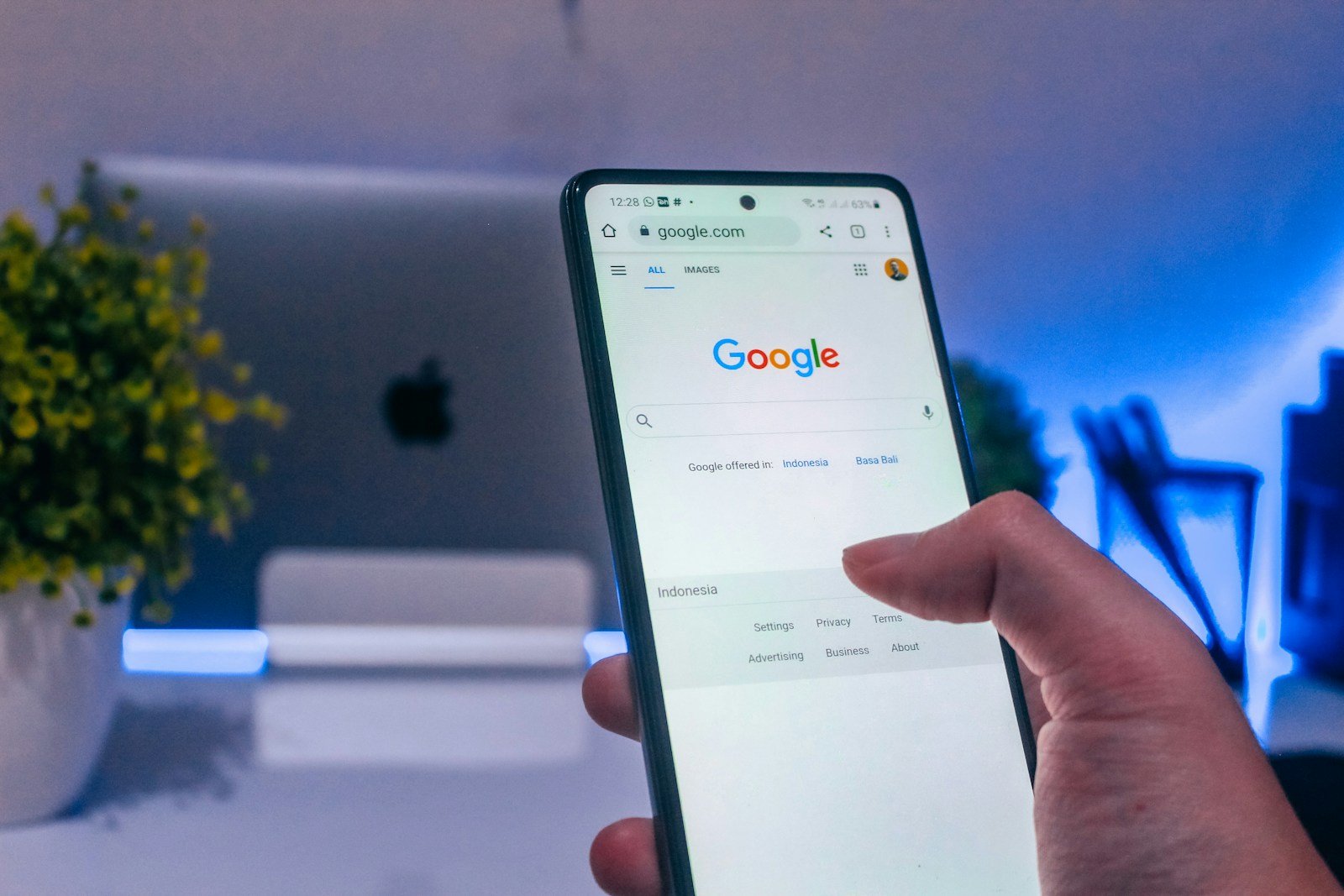In today’s digital landscape, visual search is revolutionizing how people discover information online. Google Lens, the powerful visual search tool, allows users to search using images rather than text, creating new opportunities for businesses to reach potential customers. At Mavit Digital, we’ve been helping clients optimize their visual content for this emerging search method, and we’re sharing our insights to help you prepare for the future of visual discovery.
Also Read: SEO Agencies in Canada: What to Look for When Hiring
Understanding Google Lens and Visual Search
Google Lens represents a significant shift in how people interact with search engines. Instead of typing queries, users can simply point their smartphone cameras at objects, text, or scenes to get relevant information. This technology uses artificial intelligence to recognize images and provide contextually appropriate results. For businesses, this means your visual content needs to be optimized not just for human viewers, but for AI systems that interpret and understand images.
Visual search works differently from traditional text-based search. Where text SEO focuses on keywords and content relevance, image optimization for visual search requires attention to visual elements, context, and technical factors that help AI systems understand what your images represent. Google Lens can identify products, landmarks, text, animals, plants, and more, then provide information, shopping links, or related content based on what it sees.
At Mavit Digital, we’ve observed that businesses optimizing for visual search gain early advantages in this growing field. As more consumers use camera-based searches, having properly optimized images can drive significant traffic and engagement. This is particularly valuable for e-commerce businesses, restaurants, travel companies, and any business where visual appeal matters.
Also Read: The Benefits of Hiring a Local SEO Agency
Why Image Optimization Matters for Visual Search
Optimizing your images for Google Lens and visual search offers several important benefits. First, it provides access to a growing audience of visual search users. As camera technology improves and AI becomes more sophisticated, more people are using visual search for discovery and shopping. Early optimization helps you capture this audience before competitors.
Second, visual search optimization improves your overall online visibility. Images that perform well in Google Lens often also rank better in traditional image search and can even influence your regular search rankings. This creates a compound benefit that makes your optimization efforts more valuable.
Third, visual search drives highly qualified traffic. When someone uses Google Lens to search for products or information, they typically have strong intent. For example, someone taking a picture of a pair of shoes they like is likely interested in purchasing similar shoes. This high-intent traffic often converts better than general search traffic.
Finally, optimizing for visual search future-proofs your digital presence. As technology continues evolving toward more visual and voice-based interfaces, businesses that adapt early will have significant advantages. At Mavit Digital, we help clients develop comprehensive visual search strategies that position them for long-term success.
Effective Image Optimization Strategies for Google Lens
Optimizing images for Google Lens requires a combination of technical optimization and content strategy. Start with image quality and composition. Google Lens performs best with clear, well-lit, high-resolution images that show subjects from multiple angles when possible. Avoid cluttered backgrounds and ensure your main subject is clearly visible.
Use descriptive file names that accurately reflect image content. Instead of generic names like “IMG_1234.jpg,” use specific, descriptive names like “red-leather-crossbody-bag.jpg.” This helps search engines understand your image content even before processing the visual elements.
Write comprehensive alt text that describes images in detail. While traditional image SEO might use brief alt text, visual search benefits from more detailed descriptions that include context, colors, patterns, and uses. Describe what’s in the image, not just what it represents commercially.
At Mavit Digital, we develop customized image optimization strategies based on each client’s specific industry and content types. Our approach combines technical optimization with content strategy to maximize visibility across all search formats.
Also Read: How Canadian Businesses Can Benefit from SEO Services
Technical Optimization for Visual Discovery
Technical optimization forms the foundation of successful visual search performance. Ensure your images are properly formatted and compressed. Use modern formats like WebP when possible, as they offer better compression and quality characteristics. Balance image quality with file size to ensure fast loading times.
Implement responsive images that work well across different devices and screen sizes. Since most visual searches happen on mobile devices, mobile optimization is particularly important. Use srcset attributes to serve appropriately sized images based on device capabilities.
Optimize your site’s Core Web Vitals, particularly Largest Contentful Paint (LCP), which measures loading performance. Images often contribute significantly to LCP, so proper optimization can improve both user experience and search performance.
Use descriptive URLs for image pages. When images appear on dedicated pages, ensure those URLs include relevant keywords and accurately describe the image content. This provides additional context for search engines.
Implement image sitemaps to help search engines discover and understand your visual content. Image sitemaps can include additional information about image subjects, licenses, and geographic locations when relevant.
At Mavit Digital, we conduct comprehensive technical audits to ensure our clients’ images meet all the requirements for visual search success. This includes checking file formats, compression, responsive design implementation, and overall site performance.
Also Read: SEO Services vs. Paid Ads: Which Is More Effective?

Content Strategy for Visual Search Success
Beyond technical optimization, your content strategy plays a crucial role in visual search performance. Create comprehensive product pages with multiple high-quality images from different angles. For e-commerce businesses, include images showing products in use, close-up details, and different color options.
Develop visual content that answers common questions or needs. For example, a furniture retailer might create images showing how different pieces work together in room settings. A food business might share images of dishes with ingredients labeled or preparation steps shown.
Use consistent styling and branding across your images. This helps build recognition and can improve performance as AI systems learn to associate your visual style with your brand. Consistent lighting, backgrounds, and composition styles make your images more recognizable.
Create content specifically for visual discovery. Think about what users might search for visually and create images that meet those needs. For example, a fashion retailer might create outfit inspiration images, while a home decor business might share room design ideas.
Leverage user-generated content where appropriate. Images from real customers using your products can provide authentic visual content that performs well in visual search. Always ensure you have proper permissions to use customer images.
At Mavit Digital, we help clients develop visual content strategies that align with their business goals while optimizing for visual discovery. We focus on creating content that serves both human users and AI systems effectively.
Common Mistakes in Visual Search Optimization
Many businesses make avoidable mistakes when optimizing for visual search. One common error is using generic stock photos without proper optimization. While stock images can be useful, they often lack the specific context and optimization needed for visual search success.
Another mistake is neglecting image quality and compression. Images that are too large slow down page loading, while overly compressed images lose detail needed for visual recognition. Finding the right balance is essential.
Some businesses focus only on product images while neglecting other visual content. Lifestyle images, infographics, and educational content can also perform well in visual search and should be optimized appropriately.
Others forget about mobile optimization. Since most visual searches happen on mobile devices, images must be optimized for mobile viewing and loading. Responsive design and mobile-friendly formats are essential.
Finally, some businesses neglect the context around images. Images need supporting text, structured data, and proper placement to perform well in visual search. Optimizing images in isolation rarely delivers optimal results.
Getting Started with Google Lens Optimization
Begin by auditing your existing visual content. Identify images that could be optimized for visual search and prioritize based on potential impact. High-quality product images and important visual content should be optimized first.
Research how your target audience might use visual search. Think about what they might search for and what images would meet their needs. This research will guide your content creation and optimization efforts.
Implement technical optimizations across your website. Ensure images are properly formatted, compressed, and structured. Implement responsive image techniques and improve overall page loading performance.
Develop a content plan for creating new visual assets optimized for visual search. Consider what types of images would be most valuable for your audience and plan how to create and optimize them.
Consider working with visual search experts like Mavit Digital. We have extensive experience helping businesses optimize for Google Lens and other visual search platforms. Our customized approaches help clients maximize their visibility in this emerging search format.
Conclusion
Optimizing for Google Lens and visual search represents an important opportunity for businesses to reach customers through emerging search methods. By understanding how visual search works and implementing comprehensive optimization strategies, you can position your visual content for success in this growing field.
The strategies that work for visual search optimization, quality images, technical excellence, and thoughtful content strategy also improve your overall online presence. This makes investing in visual search optimization valuable for both immediate results and long-term success.
At Mavit Digital, we’re helping clients navigate the transition to visual search successfully. Our approach combines technical expertise with creative strategy to maximize visibility across all search formats. By following these strategies and avoiding common mistakes, you can improve your performance in Google Lens and prepare for the future of visual discovery.



